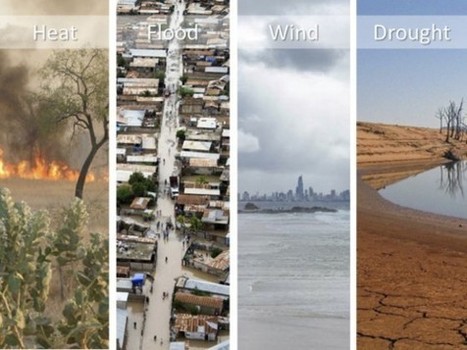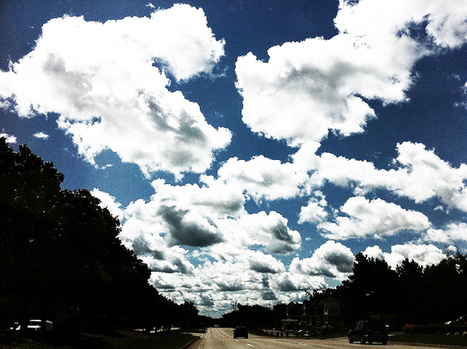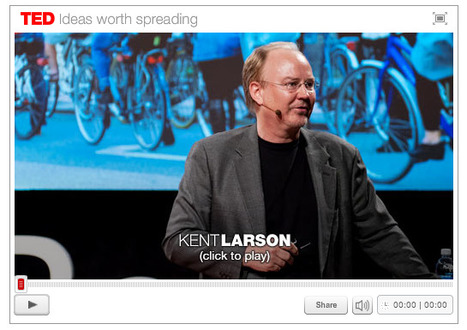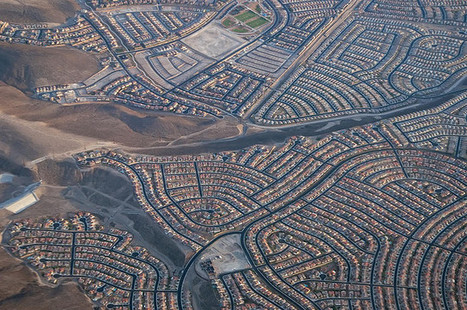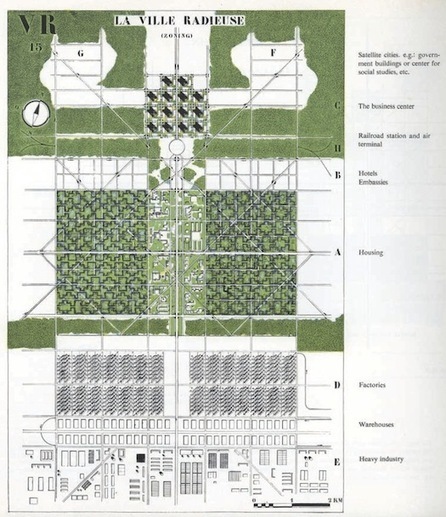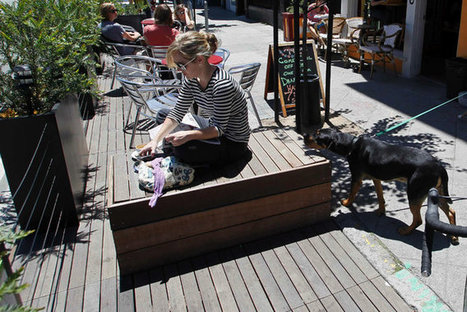 Your new post is loading...
 Your new post is loading...
Cities face unprecedented challenges. Global environmental change is placing increasing pressure on ecosystem functions and their ability to support human activities. The exponential growth of human activities is a key driver of such change, so much so that Planet Earth has certainly entered a new Epoch—the Anthropocene, in which humans have as much influence as nature itself (Steffen et All 2007). The Anthropocene (Steffen et al 2007).
Though larger, Detroit’s problems are analogous to many other cities throughout the United States. The Detroit region has been promised so many revivals, renaissances, and renewals; the city is as littered with failed urban revitalization projects as it is empty houses. Yet Detroiters are quietly working to solve problems on their own. People are rebuilding their neighborhoods without large sums of money, much organizational support, or assistance from city government. Call it the crowd-sourced city, and it is a slow process, but a beautiful one. Empty industrial buildings have become artists’ spaces and markets, vacant lots, farms and gardens, abandoned apartments, condos, and empty buildings filled with new offices. Neighborhood organizations are quietly utilizing online tools to better connect members. The old barriers of race and class remain but a tentative regional discussion has begun. What is the future of the region? Can the pattern of growth in the region continue as it has during the past 60 years? by ECPA Urban Planning Sustainable Cities Collective
Via ddrrnt
En un quart d'heure, Kent Larson, architecte et directeur du programme Home_n au MIT, pionnier de l'architecture open source, brosse une histoire de la densité urbaine et la prolonge par un prospective autour de cinq concepts innovants. La vidéo étant à la fois dense et intéressante. Elle rassemble des tendances très actuelles et les illustre avec des exemples concrets. Je vous propose de la regarder ou de lire le petit compte rendu ci-dessous.
Via Nathalie
Tony Hsieh, the 38-year old founder of online shoe retailer Zappos, is spending $350 million to redevelop downtown Las Vegas. When Zappos required a new corporate headquarters, Hsieh decided to locate in renovated office space in the City’s former City Hall building. This move bucks the trend of other tech companies and embraces an emerging change in city dweller’s lifestyle choices that Hsieh further seeks to foster. Hsieh saw that there are essentially two ways in which a major organization can interact with the built environment. They can take the approach that many other tech companies have and build a new, self-sufficient campus filled with all the amenities it’s employees could possibly desire in a lush, isolated setting. Or, they could choose to locate in a more built up area and become part of the community around it, encouraging its employees to interact with others around them and function not only as a workplace but also as a node of knowledge and ideas within the neighbourhood.
Hsieh is putting forward one solution to help solve a problem that has challenged North American cities for decades: how do we reverse an entrenched sprawl-based development program for one that is more supportive of existing urban areas? The traditional approach has been government land use policy, zoning controls, development restrictions to try to limit the amount of new suburban housing each year, targeted tax breaks for building downtown, and other top-down mechanisms for trying to shape the city region. Although success varies by place, there has been limited success and many downtowns have continued to languish even while their populations continue to balloon. Hsieh is offering what promises to be a bottom-up solution, recognizing that cities, corporations and citizens all want healthy, thriving downtowns. The missing component was the developers to get the ball rolling.
Via ddrrnt
Mobility shapes our metropolises - The Audi Urban Future Award 2012 seeks to identify new ideas for future urban mobility. To this end, six architectural offices are busy analyzing changes in mobility worldwide. The experts more or less agree that in the future around 70 percent of the world’s population will live in megacities of eight or more million inhabitants. It’s an immense challenge for the politicians and for society, and companies and corporate groups will likewise have to square up to what will be emphatically different living conditions. “We want to learn to understand this situation and these metropolises in order actively to help shape the mobility of tomorrow,” declares Rupert Stadler, CEO of Audi AG. To this end, the Ingolstadt-based company launched the Audi Urban Future Initiative and has now for the second time in this context announced an international architects’ prize. Stylepark supports and curates the project: this year six architectural and urban planning offices from metropolitan regions and conurbations have been invited to participate by thinking about mobility conditions on the ground and create visions of future mobility scenarios. Yet the basic situation today is anything but inform...
Via Lauren Moss
|
A new exhibit from the San Francisco Planning and Urban Research Association showcases the simple visualizations of complex ideas that have changed how we live. The exhibition’s title – Grand Reductions – suggests a simple illustration’s power to encapsulate complex ideas. And for that reason the medium has always been suited to the city, an intricate organism that has been re-imagined (with satellite towns! in rural grids! in megaregions!) by generations of architects, planners and idealists. In the urban context, diagrams can be powerful precisely because they make weighty questions of land use and design digestible in a single sweep of the eye. But as well-known plans, such as Le Corbusier’s, illustrates, they can also seductively oversimplify the problems of cities. These 10 diagrams have been tremendously influential – not always for the good... View all the diagrams as well as their descriptions at the article link...
Via Lauren Moss
Work is about to start on a high-density, car-free "satellite city" for 80,000 people close to Chengdu in China. Designed by Chicago firm Adrian Smith + Gordon Gill Architecture, the 1.3 square km 'Great City' will feature a high-rise core surrounded by a buffer landscape of open space (60% of the total area). Residents will be able to walk from the city center to its edge in just 10 minutes. “The design is attempting to address some of the most pressing urban issues of our time,” said architect Gordon Gill. “We’ve designed this project as a dense vertical city that acknowledges and in fact embraces the surrounding landscape.” “The sustainability framework for Great City, custom-designed based on the principles of LEED-ND and BREEAM, follows an integrated approach toward meeting the overall objectives of environmental, economic and social sustainability,” notes Peter J. Kindel, AIA, ASLA, AS+GG’s Director of Urban Design. “Great City will incorporate innovative technologies and infrastructure systems to achieve 48% energy savings of a conventional urban development.” The architects also note that the city will use 48% less energy and 58% less water than conventional developments of this size, producing 89% less landfill waste and generating 60% less carbon dioxide...
Via Lauren Moss
Urban design and public space influence us in profound and multifarious ways – our health, fitness, diets, social life, mobility, psychology, aspirations, etc. Indeed, our relationship with biodiversity is a strong determinant of our psychological and physical wellbeing. Architects, engineers, and planners, endorsed by foresighted mayors and informed by the voices of science and local community groups, can together reconcile urbanisation with nature conservation, to create more sustainable, biodiverse and resilient cities. Our generation could render a positive and enduring legacy for the benefit of future generations.
Via David Hodgson, ddrrnt
Cities from coast to coast are giving up parking spaces (and the revenue that comes from them) to create green public places for people to sit. It all started in 2005, when a San Francisco design company descended on a downtown parking space, fed the meter and created a pop-up park complete with sod, public benches and leafy trees. They called it Park(ing) Day, which eventually became an annual event. Then in 2009, when New York City began converting some street spaces into pedestrian-only plazas, urban planners started to see the appeal of pint-sized parks. Officials in different places began working with local business owners to convert parking spaces. San Francisco cut the ribbon on its first permanent parklet in March 2010; today the city boasts 27 completed parklets with another 40 in the pipeline. In the past year alone, cities from Philadelphia to Oakland and Long Beach, Calif., have launched parklet programs; others, including Chicago, Los Angeles and Roanoke, Va., are exploring the idea...
Via Lauren Moss
|
 Your new post is loading...
Your new post is loading...
 Your new post is loading...
Your new post is loading...





